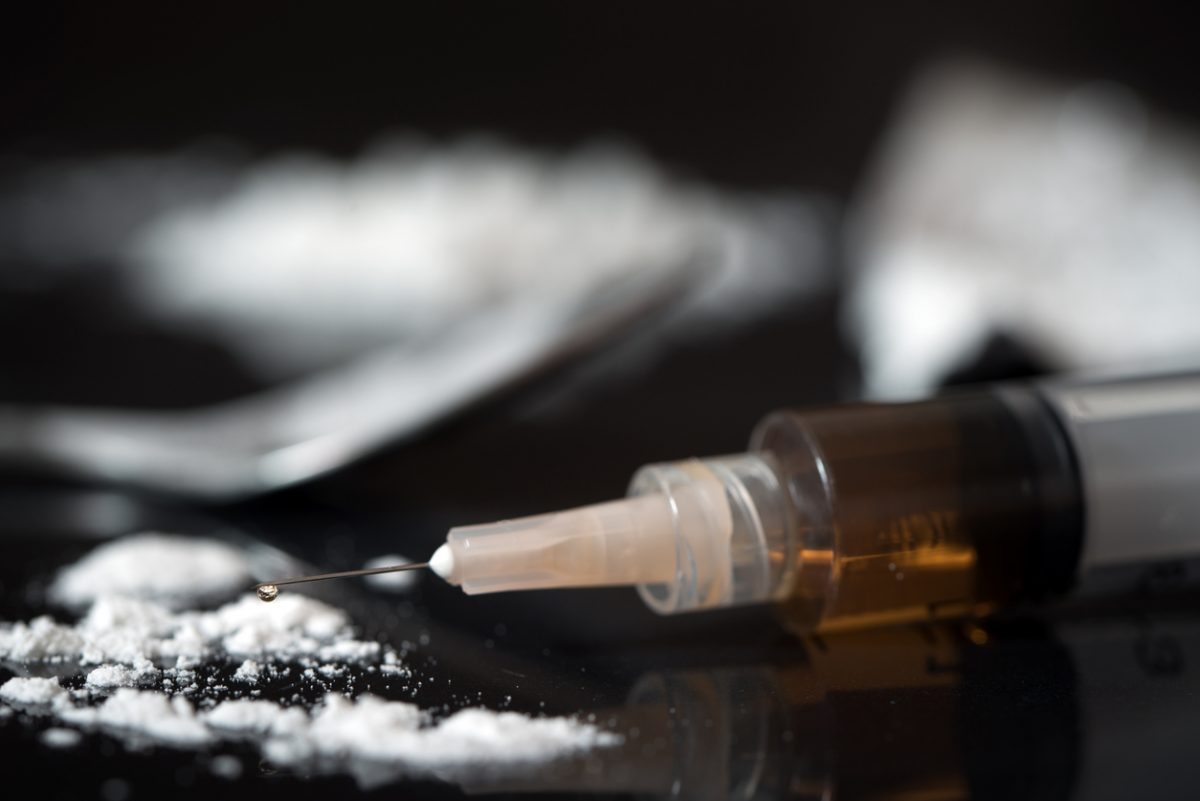
There was a 31 per cent jump in the ACT’s heroin consumption last year. Photo: Kenishirotie.
The ACT has experienced a spike in heroin use, with the latest wastewater data showing a seven-year high in consumption.
The Australian Criminal Intelligence Commission’s findings from its National Wastewater Drug Monitoring Program show that last year, heroin use in the ACT surged 31 per cent to be above the national capital average.
At the same time, consumption of the highly addictive opioid fell in all other Australian jurisdictions.
After a dip in 2019, heroin use jumped the next year and increased marginally in 2021 and 2022. But last year’s data shows a spike in consumption to 22.6 kilograms a year or 190 mg per 1000 people per day.
Seven years ago, when the program first reported, that figure was 14.7 kg a year.
Heroin is now the third most common illicit drug taken in the ACT after cannabis and methylamphetamine.
Canberra, Sydney and Melbourne recorded the highest level of heroin use.
Prescription opioid use – oxycodone and fentanyl – is also at or above the national capital average.
Cannabis remains the most popular illicit drug in Canberra and across the nation. At 2500 mg per 1000 people per day, Canberra’s usage is way above the national capital average.
However, consumption remained steady in 2023 at 323 kg a year, after regular increases from 2019 to 2022.
Cocaine use, after a dip in 2022, is back up above the national capital average at 63 kg a year, although this is a long way off the peak of 113 kg a year in 2020. Nonetheless, it represents a 17 per cent increase from the previous year.
Methylamphetamine is the second most popular drug in the ACT, and it too increased in use in 2023 (13%), although it remains well below the national capital average.
Its use peaked in 2020 (122.1kg/year). Consumption fell away in subsequent years but is again on the rise at 93.9 kg/year.
The possession of small amounts of illicit drugs in Canberra was decriminalised last year but it is too soon for any effects to be discerned.
Nationally, the report reveals a big increase in methylamphetamine, cocaine and 3,4-methylenedioxymethylamphetamine (MDMA) consumption.
More than 16.5 tonnes of methylamphetamine, cocaine, heroin and MDMA was consumed between August 2022 and August 2023, a 17 per cent increase in consumption of these drugs from the previous year.
When cannabis is included, more than 30 tonnes of the five illicit drugs were consumed nationally.
ACIC says the 1.5-tonne increase in national methylamphetamine consumption is of considerable concern due to the significant community harm caused by the drug.
Australians spent an estimated $12.4 billion on methylamphetamine, cocaine, MDMA and heroin between August 2022 and August 2023, and methylamphetamine accounted for 85 per cent of it ($10.5 billion).
ACIC CEO Heather Cook said the data was vital to providing a comprehensive view of Australia’s drug market and combating the threat of serious and organised crime (SOC) groups who were trafficking and producing illicit drugs.
“SOC groups are highly capable, well-resourced, resilient and increasingly transnational,” she said.
“Our wastewater analysis is used in conjunction with seizure, arrest, price, health and availability data, which reveals drug market resilience and points of vulnerability that present opportunities for coordinated strategies to improve community safety.”
Ms Cook said ACIC was working with an increasing number of international bodies on wastewater analysis. The agency’s knowledge and experience in this field assisted partnerships with offshore agencies working against illicit drug use.
She said, “Australia is a global leader in wastewater analysis, and the ACIC’s insights inform policy and operational decision-making.”
“We remain committed to working with domestic and international intelligence and law enforcement partners to identify and disrupt serious and organised criminal networks who continue to supply illicit drugs to Australian markets.”
This report includes data on Australia’s drug consumption for 12 substances and includes data for August (capital city and regional sites) and October 2023 (capital city sites).
Sixty-two wastewater treatment plants participated nationally in August 2023, covering 57 per cent of the Australian population.
Original Article published by Ian Bushnell on Riotact.











